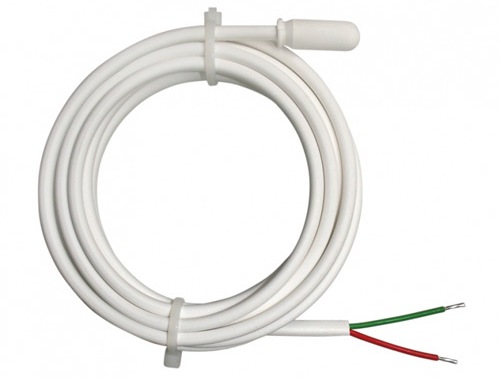Categories: Repair of household appliances
Number of views: 30791
Comments on the article: 1
How to check the underfloor heating sensor
One of the typical problems that every owner may encounter warm floor, is a malfunction of the temperature sensor. Nevertheless, this problem is easily solved by replacing the sensor, however, its diagnosis is required before. And the diagnostic process is quite simple.
To carry out the diagnostics of the temperature sensor, it is enough to remove the thermostat, a screwdriver is required for this, and measure the resistance of the sensor directly using a conventional household multimeter.

A sign of a problem with the temperature sensor is a quick shutdown of the underfloor heating, when it simply does not have time to reach the set temperature, or overheating beyond any measure. If this happens, then you can safely, after turning off the power, remove the thermostat, and proceed to check the temperature sensor, the wires from which are connected to the thermostat.
The sensor cable is a two-wire cable, and for diagnostics you just need to measure the resistance between these wires. A typical resistance range, depending on the model of the sensor, falls within the range from 5 kOhm to 120 kOhm depending, of course, on the temperature of the sensor body.
An NTC thermistor is usually used as a sensor element. The exact values of the resistances specifically for your sensor should be indicated in the instructions (documentation) for the thermostat.

Set multimeter in ohmmeter mode, set the appropriate measurement limits, and measure the resistance value between the wires of your temperature sensor. If this value turned out to be completely beyond the limits of the passport data (taking into account the ambient temperature), then this is a clear symptom of a malfunction of the temperature sensor, and then it should be replaced.
The simplest solution is to contact a company engaged in underfloor heating, name it the model of your thermostat, and buy a suitable temperature sensor. Replacement does not take much time and effort. If the sensor is walled up in the solution, then look for an alternative solution, for example, let the air temperature in the room be measured now, and when the set air temperature is reached, it will turn off.
Pay attention to the compatibility of the sensor with the thermostat. Not every thermostat manufacturer will be able to guarantee the correct operation of the system with a sensor from another company. For the convenience of selecting a sensor, use the table of resistance of sensors of different brands depending on temperature.
Here are the data on the most popular thermostats and standard sensors that come with them: https://env.electricianexp.com/termodatchik.jpg
See also at bgv.electricianexp.com
:
